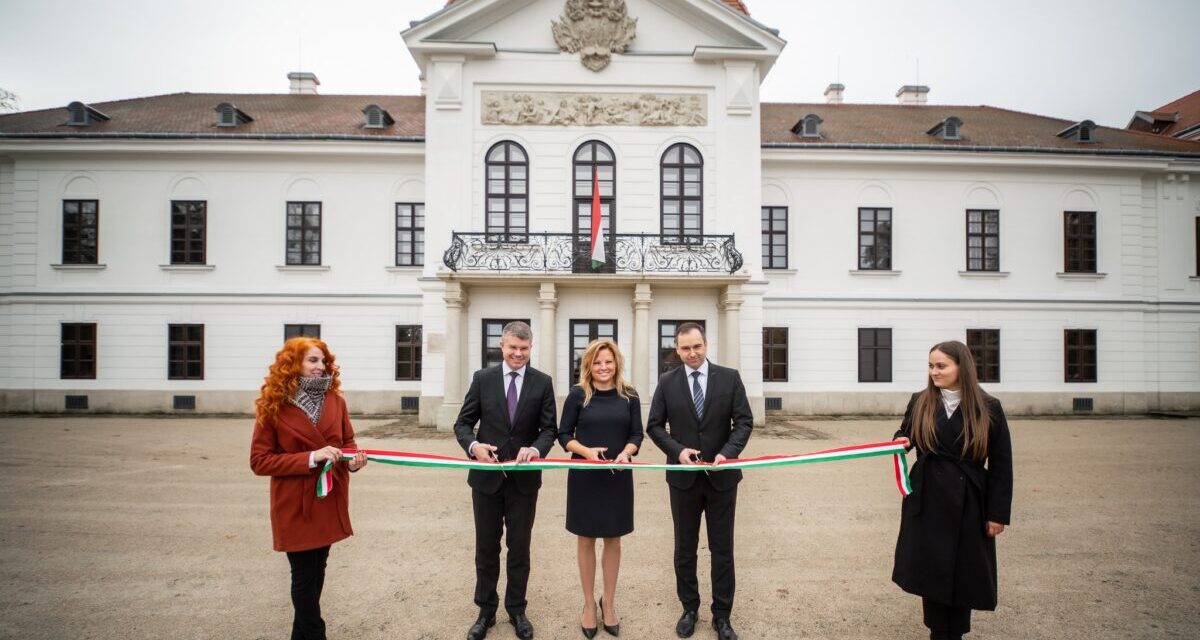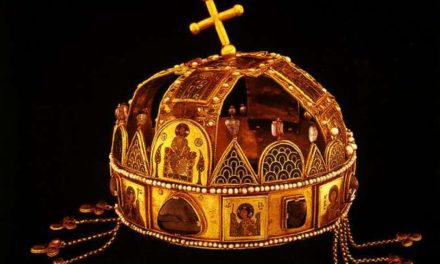The largest Hungarian home can become a national pilgrimage site.
After three years, the Széchenyi Castle in Nagycenk opens its doors to visitors again: the building complex, which was renovated at a cost of more than 3.2 billion forints, and the related tourist developments were handed over, and at the same time, the Széchenyi Castle, which presents the Széchenyis and offers a glimpse into their lives, reopened its doors to visitors. also a permanent exhibition.
Home of the largest Hungarian family, Count István Széchenyi, the late baroque, classicizing style castle built in the decades of the 18th century was reborn within the framework of the National Castle Program and National Castle Program.
Within the walls of the building, a renewed exhibition presents Count István Széchenyi as a statesman and as a private person.
In addition, the history of the family and the oeuvre and home of István Széchenyi are both displayed in the castle's spaces. The different worlds of the two themes are reflected in two exhibition images with different atmospheres, with the inclusion of exciting, interactive elements - it was revealed in the announcement of the National Heritage Development Nonprofit Kft. (NÖF).
Péter Ágh, the Secretary of State responsible for the social coordination of public investments at the Ministry of Construction and Transportation, stated in his greeting at the ceremonial handover: the renovation of the Nagycenk Castle was a national monument and a self-evident duty.
"We must preserve the monuments of our national heritage and make them accessible to future generations," he emphasized.
The state secretary also drew attention to the special significance of the fact that the renovations of the renewed Széchenyi Castle were handed over on December 14, the anniversary of the Loyalty Day.
In his speech, he referred to the fact that in 1921 the people of Nagycenk voted overwhelmingly in favor of Hungary in a referendum, testifying to their patriotism, as well as their adherence to the spiritual heritage of the greatest Hungarian, Count István Széchenyi.
Ágh also reminded that 17 castles and 12 castles were renovated out of HUF 60 billion available in the National Castle and Castle Program with the coordination of the NÖF belonging to the Ministry of Construction and Transport.
In the recently concluded project in Nagycenk, the Old Castle, the Széchenyi wing, the Flower House, the Pandúrházak and the castle park were renovated during the reconstruction work, the state secretary explained.
Later, Zsanett Oláh, the executive director of the NÖF, took the floor. He said: "with the opening of the Széchenyi Castle in Nagycenk, which has been revived thanks to the renovation, tourism in the region can be revived, so it can once again play an important role in the life of the local community.
I am confident that the national memorial site will soon become a national pilgrimage site!" - emphasized the manager.
The one-story baroque castle was built in the 1750s, and during its construction, the foundation walls of the Majorság building that once stood on the site were also used. The castle's ground-floor hall, staircase and upstairs great hall still retain their original, baroque form. A chapel was created in the eastern wing of the building, and a theater in the western wing. The creation of the park in front of the castle, which was considered one of the most important noble gardens of the era, can be attributed roughly to this period.
István Széchenyi created a model farm here in the spirit of his experiences abroad.
In 1834, Ferdinánd Hild commissioned an architect from Sopron to rebuild and modernize some parts of the castle. Next to the main building, he built a wing connected at right angles on both sides, from which the technical achievements learned during foreign trips, the bathroom and the flushing toilet could not be left out. Gas lighting was also introduced at that time. The count created his own living quarters in the western wing of the building, where he also placed his library and study.
Cover photo: The Széchenyi Castle in Nagycenk was handed over
Source: Facebook/NÖF National Heritage Development Nonprofit Kft.












